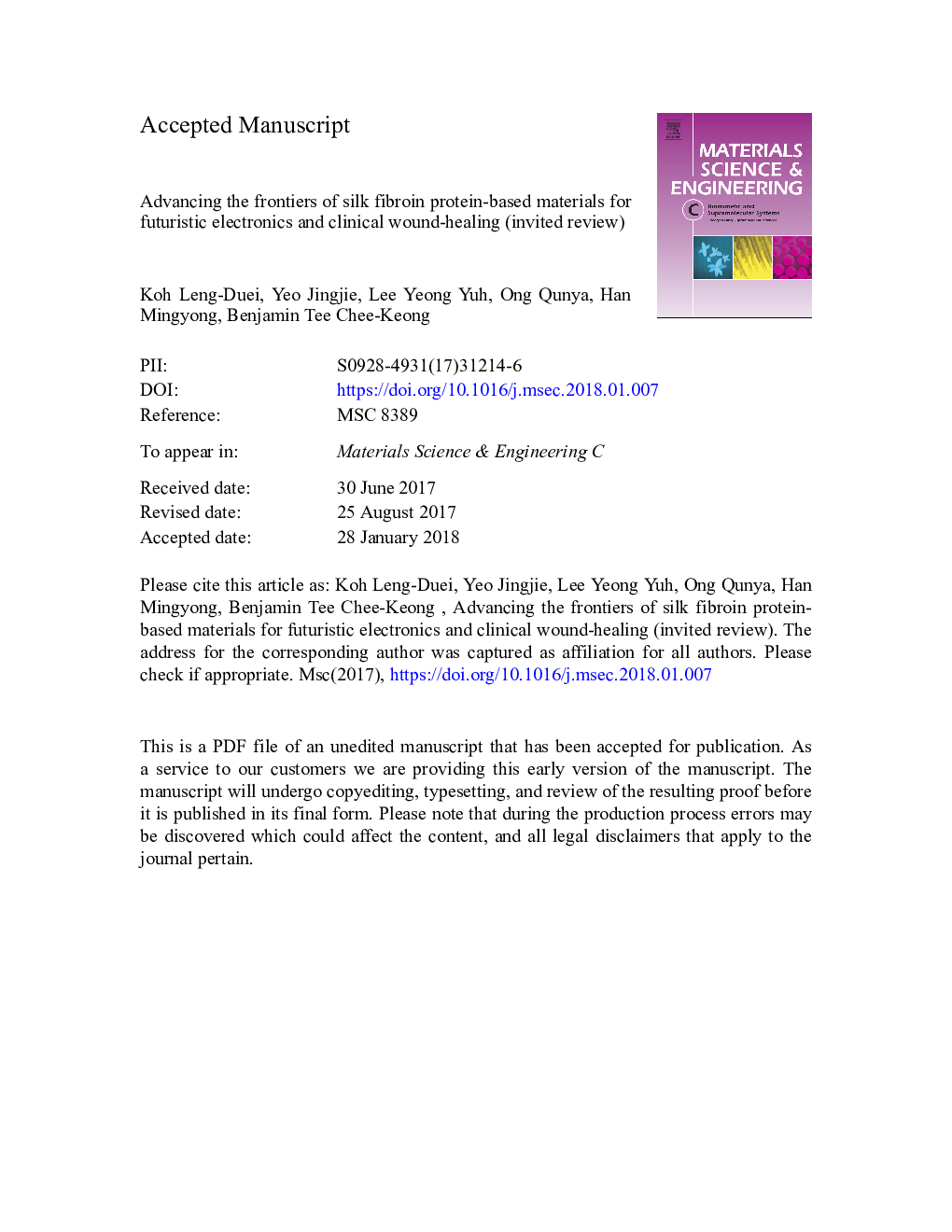| Article ID | Journal | Published Year | Pages | File Type |
|---|---|---|---|---|
| 7866471 | Materials Science and Engineering: C | 2018 | 59 Pages |
Abstract
The present review will introduce the basic concepts of silk-based electronics/optoelectronics including the latest technological advances on the use of silk fibroin in combination with other functional components, with an emphasis on improving the performance of next-generation silk-based materials. It also highlights the patterning of silk fibroin to produce micro/nano-scale features, as well as the functionalization of silk fibroin to impart antimicrobial (i.e. antibacterial) properties. Silk-based bioelectronics have great potential for advanced or futuristic bio-applications including e-skins, e-bandages, biosensors, wearable displays, implantable devices, artificial muscles, etc. Notably, silk-based organic field-effect transistors have highly promising applications in e-skins and biosensors; silk-based electrodes/antennas are used for in vivo bioanalysis or sensing purpose (e.g., measurement of neurotransmitter such as dopamine) in addition to their use as food sensors; silk-based diodes can be applied as light sources for wound healing or tissue engineering, e.g., in cutaneous wound closure or induction of photothrombosis of corneal neovascularization; silk-based actuators have promising applications as artificial muscles; whereas silk-based memristors have exciting applications as logic or synaptic network for realizing e-skins or bionic brains.
Related Topics
Physical Sciences and Engineering
Materials Science
Biomaterials
Authors
Leng-Duei Koh, Jingjie Yeo, Yeong Yuh Lee, Qunya Ong, Mingyong Han, Benjamin C-K. Tee,
